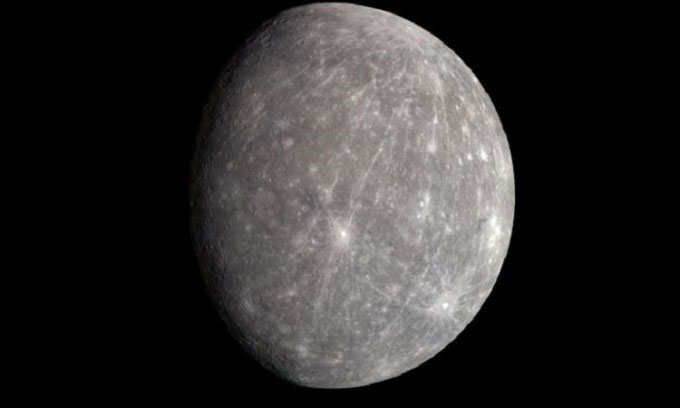Simulations from a newly published study at the Lunar and Planetary Science Conference (LPSC) in Houston, Texas, last week suggest that the surface of Mercury may be filled with diamonds.

Mercury has many craters on its surface. (Photo: Wikipedia)
Mercury is covered by graphite, a pure form of carbon that can transform into diamonds after impacts from meteoroids, asteroids, and comets. Researchers have long known that Mercury experienced heavy bombardment during the Late Heavy Bombardment, a period in the early solar system about 4.1 to 3.8 billion years ago when most of the craters on the Moon formed. However, Mercury has significantly more craters than the Moon, leading to more impacts that could generate diamonds.
According to Kevin Cannon, an assistant professor of geology and space resources at the Colorado School of Mines, Mercury started with a thin layer of graphite that formed shortly after the planet cooled from its magma ocean. Asteroids and comets struck this layer at speeds of tens of kilometers per second, creating pressures high enough to convert graphite into diamonds.
However, the diamonds located relatively close to Mercury’s surface may be very different from the diamonds we cut for jewelry. They would resemble small, opaque diamonds used as abrasives in industry, a mixture of graphite and other carbon forms.
Mining in space is particularly challenging on Mercury due to orbital mechanics issues. However, BepiColombo, the upcoming mission from the European Space Agency (ESA), will map Mercury at various wavelengths when it reaches planetary orbit on December 5, 2025. “In theory, the BepiColombo mission could detect diamonds in surface materials. The spacecraft has many instruments that can support NASA’s MESSENGER mission and is capable of better exploring this type of mineral,” Cannon stated. The MESSENGER mission mapped Mercury from 2008 to 2015.
The two spacecraft in the BepiColombo mission are the Mercury Planetary Orbiter (MPO) from ESA and the Mercury Magnetospheric Orbiter (MMO) from the Japan Aerospace Exploration Agency, which will jointly study the origin, evolutionary processes, structure, geology, composition, craters, atmosphere, and magnetosphere of Mercury. The mission will also investigate sediments in the craters on the planet’s surface.

















































